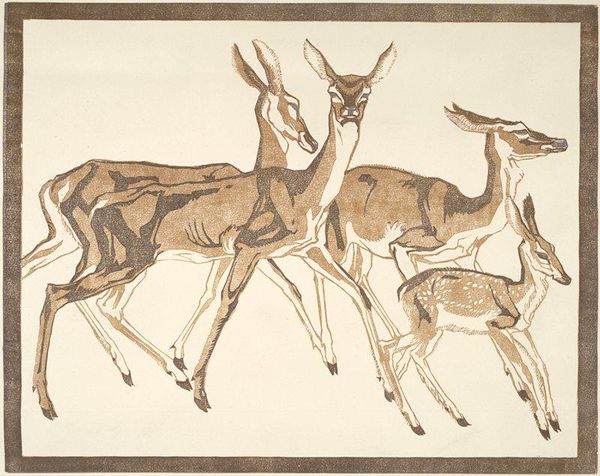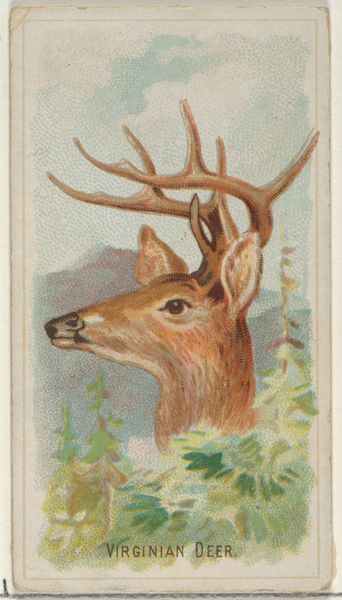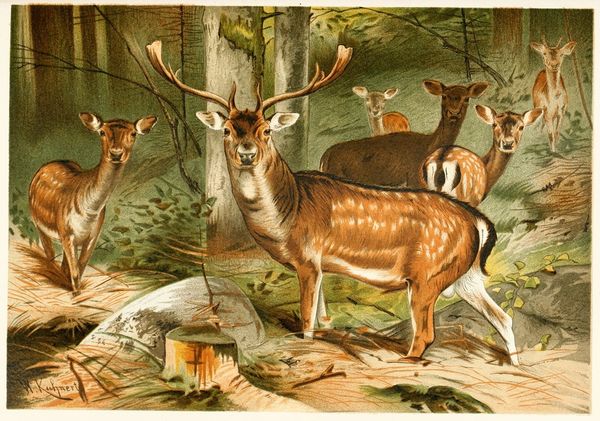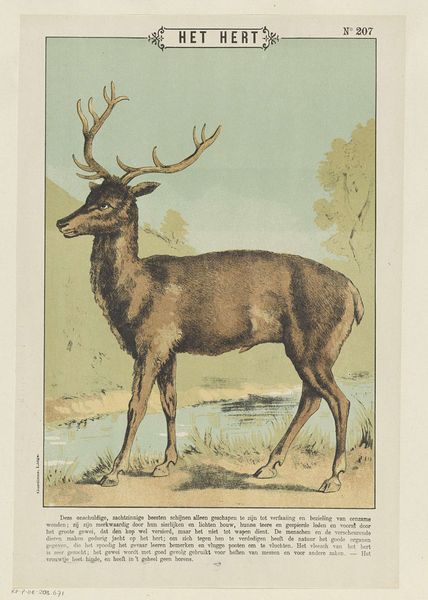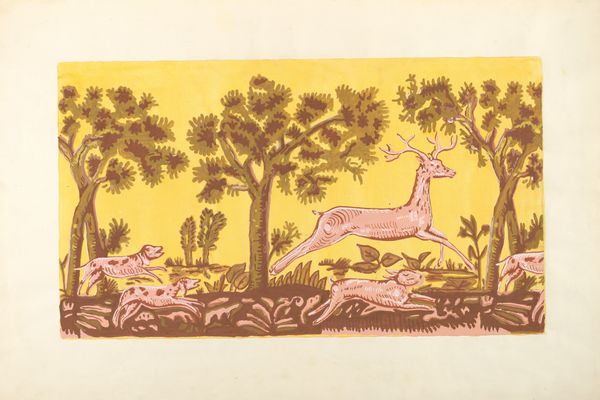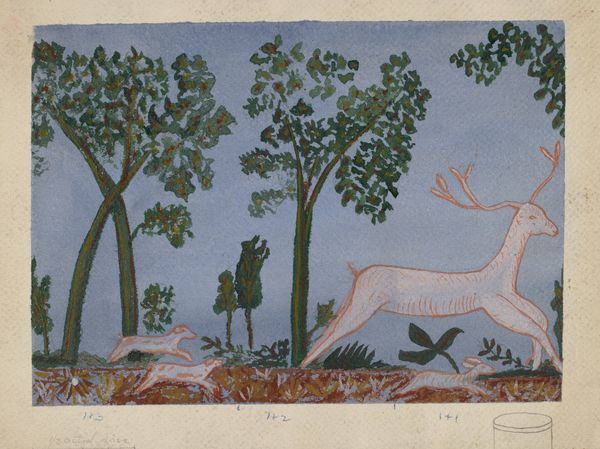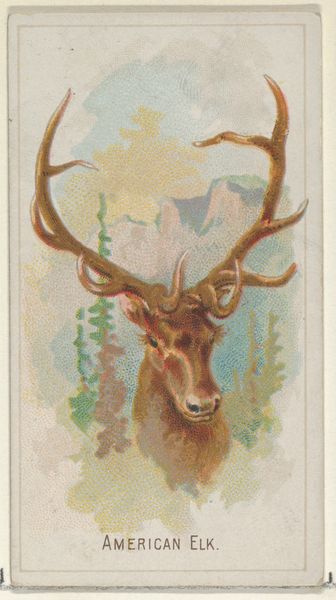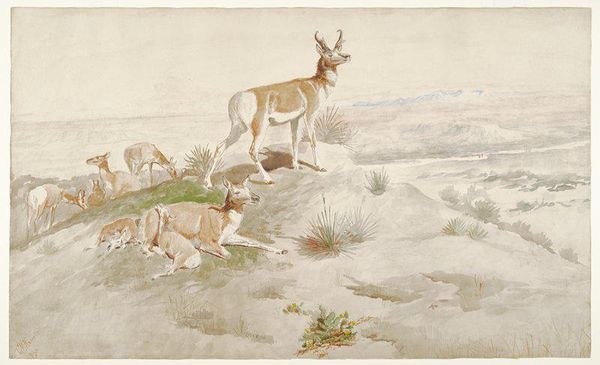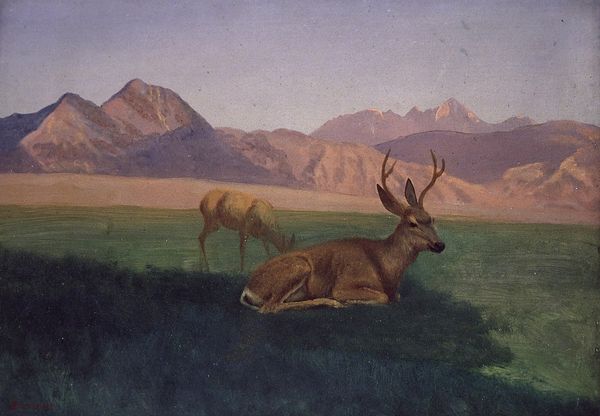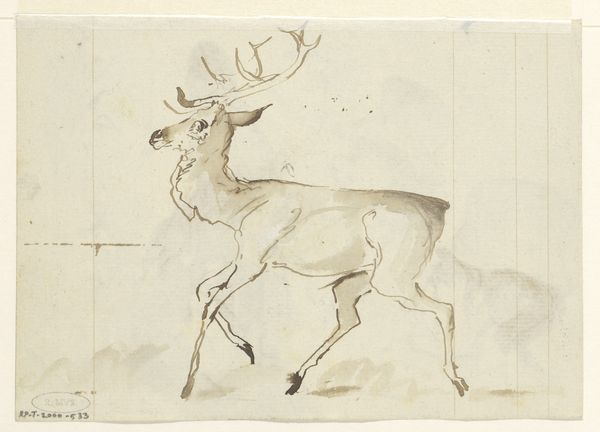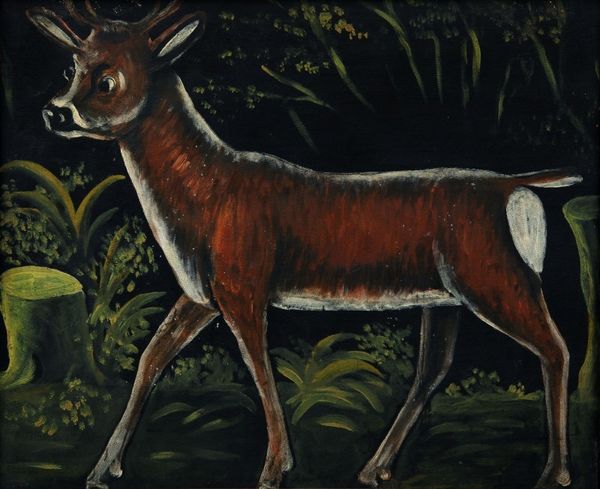
watercolor
#
art-nouveau
#
animal
#
landscape
#
figuration
#
watercolor
#
art nouveau
Copyright: Public Domain: Artvee
Editor: Here we have "Cerfs," created in 1897 by Maurice Pillard Verneuil, a watercolor work depicting a herd of deer. The color palette creates a peaceful yet slightly stylized mood. The flat planes of color are interesting. How do you read this composition? Curator: Indeed, the power of "Cerfs" resides in its sophisticated manipulation of form. Consider the application of watercolor—observe how Verneuil creates depth not through traditional shading, but through juxtaposing flat areas of color. The teal backdrop, juxtaposed with the ochre foreground, enhances the spatial complexity, creating a planar effect rather than a volumetric one. What does that accomplish for you? Editor: I see what you mean! It emphasizes the artifice, reminding us that this isn't a direct imitation but a constructed image. Also the rhythm established by the repetition of vertical birch trees and the staccato placement of the deer. Curator: Precisely. Notice also the treatment of line. It's deliberate and controlled, outlining forms to flatten them. Look closely at the leading stag; the stark linearity in the antlers against the gentle curves of the body sets up an intentional formal tension. This is where the piece resonates beyond simple depiction, operating instead as a self-aware construction of visual elements. Editor: So, while it appears to depict nature, it really draws attention to its own constructed nature through color, line and flattening. Thanks. It makes me appreciate it in a new way. Curator: Precisely. Thinking about art in this way opens doors for many readings and understandings.
Comments
No comments
Be the first to comment and join the conversation on the ultimate creative platform.
